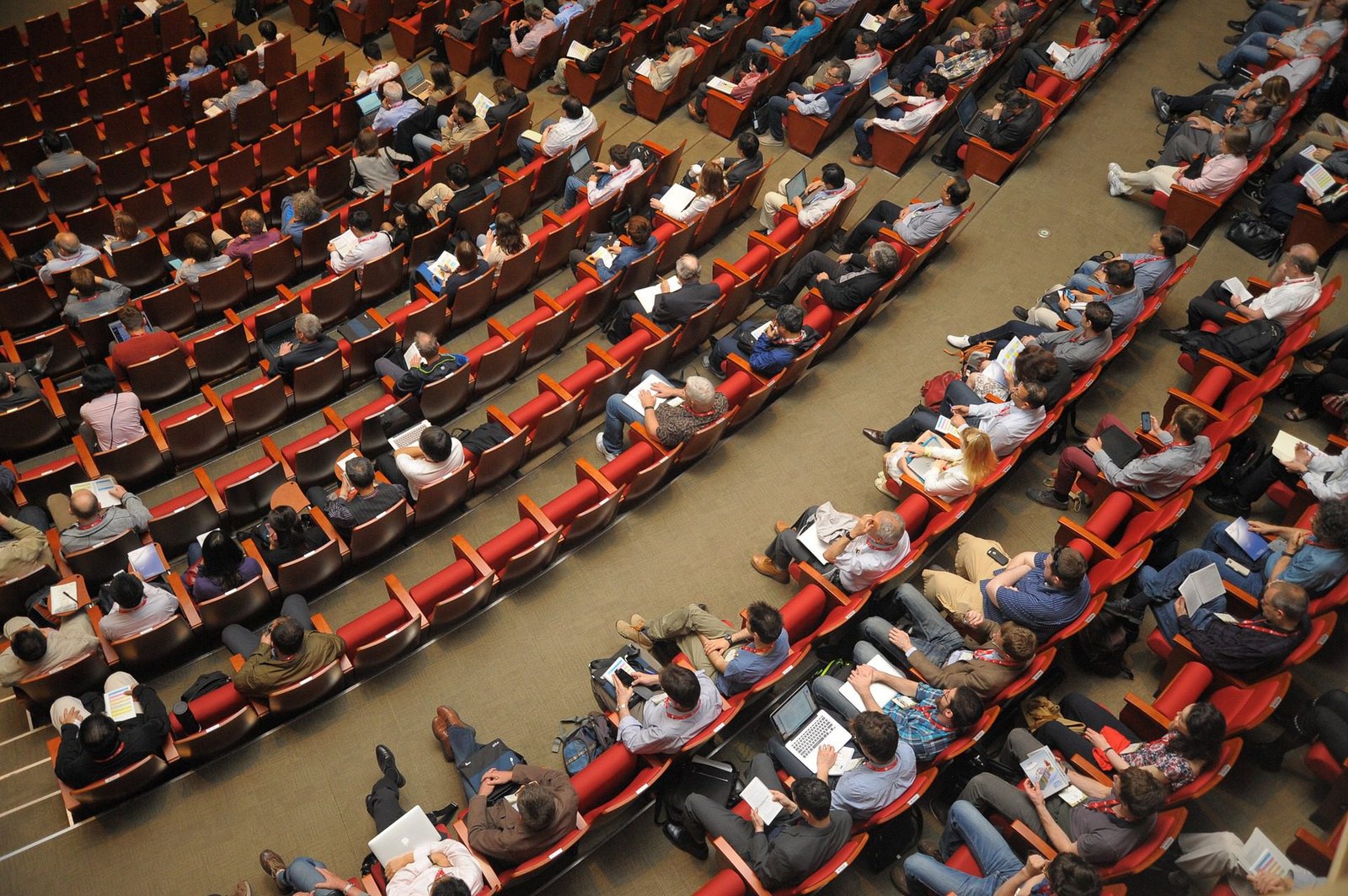By Marlene Carrasco:
Report on the 12th Australasian Permaculture Convention by UWS Permacuture Club.
David Holmgrem presented the Keynote Speech at the Convention, held in Penguin Tasmania.
I recently traveled to Penguin,Tasmania, to attend the Australasian Permaculture Convention representing the UWS Permaculture Club. This is what I have brought back for you.
Permaculture is a holistic design system for creating sustainable human settlements and is based on ethics and principles that can be applied to all facets of our daily lives from food systems, the built environment, through to governance and economics.
The concept of Permaculture was developed in Tasmania in the late 1970s by Bill Mollison and David Holmgren, as a positive and proactive response to the many pressing social and ecological challenges of our time. From humble beginnings, Permaculture has spread to just about every corner of the globe, is being practiced in many different climates and applied in settings ranging from urbanised cites to rural communities. Over the past 40 years, there have been many inspiring Permaculture endeavours from creating fertile oases in arid landscapes, through to reinvigorating urban backyards and building stronger community connections. Yet, there is still much to be done in working toward an ecological sustainability and socially just presence on the planet.
It was exciting to be in the company of such wisdom and insight of the pioneers of Permaculture (such as David Holmgren, Robyn Francis, GoeffLawton and UWS Professor Stuart Hill) and others who are seeking to create a sustainable future. I spent the next four days immersed in workshops covering topics like ‘Intentional communities, Diversity for sustainable food production, The power of making good shit happen: Radical homemaking, community development and digging holes, The Anthropocene: what role can permaculture play?’, engaged in many interesting discussions and connected with permaculturists from all over Australasian region, ate yummy organic local produce purchased via an alternative economic system called CENTs http://www.nwcents.org/.
In his keynote speech David Holmgren builds on the lessons of 40 years of permaculture and kindred activism to articulate how the bottom up permaculture strategies that focus at the personal, household, enterprise and community level can be effective where mass movements to demand top down change are repeatedly derailed or simply reinvent the problems in new forms ( the solution becomes the problem).
At a time when environmental activists are feeling increasingly embattled and desperate, the opportunities for permaculture have never been greater. Are we ready to use whatever agency remains at the personal, household and community level to turn the problems into solutions?
David Holmgrem – Keynote @ The Australaisian Permaculture convention Penguin Tasmania March 2015:
“Permaculture design system and activism
Permaculture is a design system for sustainable land use and living.
It articulates and applies the design principles of nature in new ways appropriate to the energy descent era of industrial civilisation. These design principles are embedded in an ethical framework derived from the commonalities of indigenous and traditional cultures of place.
Permaculture activism uses global understanding to inform local action at the personal, household and community scale to create models capable of viral proliferation.
Permies seeks to create the world we do want by direct constructive action rather than stopping the world we don’t want by restrictive action. Permaculture’s popularity especially with environmentally aware youth over three generations can be partly attributed to a “good cop/bad cop” synergy with more conventional oppositional activism. Thus those who have done their time in direct action in the forest (or shale gas blockades) are often supported by those who spend their positive energy on the permablitz front line.
Similarly for more mature people, being the change we want to see in the world is far more empowering, than using all our capacity and credentials to push for policy change from the top down.
Pushback from conventional activism
While the support for permaculture and positive environmentalism in general has grown stronger in recent years, there is also a pushback from those committed to the top down and oppositional strategies. The argument is that composting your garden may be good for you but it does little to help bring about the necessary structural changes in society that, it is argued, can only come through big processes such as
corporate capitalism making big bucks doing good,
top down policy reforms driven fearless political leaders or
mass movements threatening revolution to force change at the top.
Those committed to these pathways argue theirs is the best. Often the pathway of changing the world by changing ourselves is ignored or denigrated as self obsessed navel gazing.
In the permaculture movement the value of this DIY approach is taken for granted but permies often have difficulty in articulating to others why this approach is at least as important as the other three in shaping a more positive future for ourselves, humanity and nature.
I want to go one step further to articulate why the DIY and DIO (doing it ourselves) approaches of permaculture are the most efficient, resilient and empowering ways to focus our own limited power in the world.
Activism that is good for our bodies and our minds is fun and empowering, and makes us more self reliant, and resilient in the face of uncertain futures, is a much easier sell than activism that involves self sacrifice for some larger collective good. In this sense permaculture shares some common ground with green corporate capitalism’s focus on rewards as a motivation even if the rewards are primarily non monetary.
If our experiments in DIY self-reliance are successful, others without as much innovator tenacity can copy what we do without having to make so many mistakes. The issue of whether our solutions are scalable beyond the non monetary household and community economies to the monetary economy, let alone corporate capitalism is less important than whether our solution can replicate virally to achieve scale in numbers
Big solutions to big problems often recreate the problem in a new form. Small scale solutions have the advantage of being site and situation specific and being more amenable to incremental organic adaptation with less risk that failures causes higher order systemic failures. For example local raw milk Community Supported Agriculture system have some real (very low) risk of causing illness but large scale corporate supply systems of industrial milk have created problems where large numbers of people spread across countries become sick before corrective responses can be enacted.
In addition there is strong evidence many successful small business get started in the household and community economies of gift, exchange and reciprocity before growing into the monetary economy. In the future, two processes suggest this might be the main mechanism by which we grow a new monetary economy. Credit crunches from deflationary economics eliminate bank finance for small business so the bootstraps DIY approach is the only option. Secondly the capacity of governments to enforce regulatory barriers that currently stymie home producers going commercial, will be unsustainable.
What we do in our own households, with our family and informal community networks is simple and small scale so that it largely can occur
without the permission of the banks who -through their lending – determine what does and what does not happen in the credit driven monetary economy,
and without the knowledge of the corporate competitors who stand to lose market share,
and mostly under the radar of the government regulators whose function is to secure the market for bank financed corporate investment.
The potential for mass adoption is the test that most political activists want to see before they will accept any value from DIY approaches. Can we persuade everyone to grow their own vegetables? What if everyone had a wood stove? Is there enough land in the city to grow all the food? How will it help us close down a brown coal power station?
Mainstream political action focuses on persuading the majority because the majority is always the biggest game in town. This focus on majorities is strategically useless for smaller order players like environmental and social activists. Apart from the need to counter the massive propaganda might of the strongest lobby groups, it ignores an important trend in affluent, notionally democratic nations at least since the thatcherite/reganite revolution of the early 1980’s . A simple or even large majority is not enough to persuade elite power structures to roll over and implement policies that directly threaten their own power (eg Iraq war 2003).
On the other hand the DIY approach has some important advantages as a political change pathway. Firstly the DIY approach that reflects permaculture ethics and design principles behaves as a systemic strike of labour, skill and capital against the debt financing by banks, globalized production controlled by corporations and central government taxation dependent on constantly rising GDP. I have argued in Crash On Demand, that a 50% reduction in consumption, work and investment by 10% of the global middle class could be enough to severely undermine the power of these global systems (that are already teetering due to the massive global unpayable debt burdens)
Whatever the effects on centralized systems, the experience of building the parallel systems from the bottom up will expose the strengths, weaknesses, opportunities and threats through a rapid learning cycle. In the process we can better articulate a larger scale public policy agenda that would allow the next level of adoption and adaption as well as clarifying the design characteristics necessary for any truly useful larger scale government or corporate driven solutions.
The response of the centralized power structures to such a systemic strike might be to introduce draconic regulations and politically demonise those pursuing DIY enlightened self interest. We should expect more of this but there are limits to how effective such responses might be. Firstly the diffuse, even invisible nature of many of these personal and household strategies makes them inherently difficult to control. Recent attempts to control raw milk in Victoria are likely to be as ineffective as drug prohibition – every man and his dog now admits has failed despite massive resources and efforts on the part of the state. Secondly demonizing raw milk consumers and gardeners is somewhat harder than doing the same to so-called radical Islamists.
The alternative more hopeful response of centralized power might be to engage in political discourse to encourage the striking minority to come back into the fold. “We need your consumption and your creativity, what would you like to be paid to be part of the Team (Australia)” Being relatively autonomous gives us much more political leverage than being part of a mass movement of completely dependent consumers and indebted workers.
In the Brown Tech future that I believe we are increasingly locked into – nationally and globally – I think there will still be some opportunities for constructive dialogue with those trying to bring about top down change either with/through government or corporations; but we should expect that some of these opportunities will almost inevitably turn the solution back into the problem. In the face of unfolding environmental, geological, economic and geopolitical crises, the ability to ‘speak truth to power’ in defense of dispossessed people and voiceless nature will become more symbolic that effective in achieving resilience let alone justice.
On the other hand, the urgency in building the parallel systems on the conceptual and geographic fringes (edges and margins principle) will grow and the interest from those wanting to participate with their hands and hearts will increase to a flood. The ability to replicate workable alternatives to the strictures of contracting but monopolistic centralized systems will be a challenge for permaculture activists.
At the moment, turning the tide of the majority to our way would be more of a destructive tsunami than a surfable wave. If we can prove to ourselves that we can enjoy life living more healthy and resilient lives, less dependent on centralized systems while massively reducing our ecological footprint in the process, then we provide a pattern than others can copy. At the same time we contribute the diversity of solutions that can model whatever utility and hope remains for system-wide reform and redesign. And if that fails at least we lived the solution and have a multiplicity of lifeboats that give the best chance of saving the useful bits and even the essence of wisdom from a failing civilization for the emergence of the next.
Zooming back from the over-the-horizon big picture to the here and now, I would like to suggest ways in which we can make the DIY and DIO strategies achieve their great potential for positive change.
DIY suggests a learning process with less than perfect results, but if we want others to copy us then the work of reviewing, debugging and refining our solutions is essential. The fact that permaculture has generated a lot of half baked outcomes by people who are “jacks of all trades but masters of none”, is to some extent an inevitable outcome of the experimental and generalist integrated nature of permaculture solutions. However to establish any credibility – let alone have others copy us – requires food gardens that are abundant, compost toilets that smell sweet and lifestyles that are attractive to at least a motivated minority. We don’t need to dumb permaculture down for the masses but it does need to work at least on the terms of those who are interested.
We need to admit and correct our mistakes, and avoid the error of suggesting a given permaculture technique, species or even strategy is applicable everywhere. (It is the principles and ethics that are universal)
Most of all in celebrating our being jacks and jills of all trades, we should aim – at least in maturity – to also become masters and mistresses of one. One trade that can allow us to be truly useful members of relocalising communities where many may not recognize permaculture understandings – let alone p c ideology – as having any value. Energy descent futures, especially of the Brown Tech variation will not necessarily see permaculture as widely appreciated.
While this first issue [specify the issue]is about the reality and perception of effective solutions that have the power to spread, the second is about the degree to which apparently practical and effective permaculture designs are leading to substantial decoupling from the globalized economies that are now degrading humanity’s future.
In the same way that it is not clear that renewable technologies can proliferate without abundant fossil fuels and debt financing, it is not clear that when we live our permaculture lifestyle we are not just participating in global degradation through more indirect pathways.
I believe the holistic nature of permaculture can allow us to progressively integrate our personal, household, enterprise and communal systems. These systems can more and more support and stimulate, first the non monetary economies, and secondly businesses controlled by natural persons, as we progressively disengage from support for and dependency on businesses run by non natural persons (corporations) that are structurally immune to ethical influence. How to do this with one arm tied behind our back and hopping on one leg is a balancing act to say the least. (eg coming to Tassie on the Ferry)”
David’s Keynote was a great introduction to a very inspiring Permaculture convergence.
Check out the UWS Permaculture Club and learn strategies that will support you and your family through peak oil.
IMAGE: Kate Andrews



